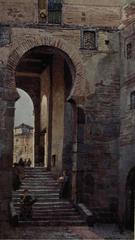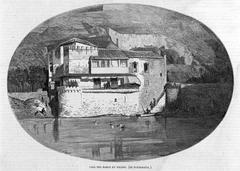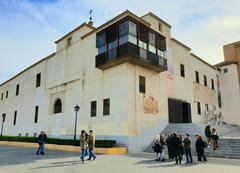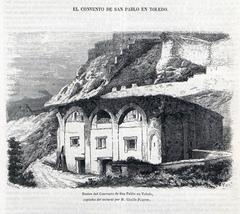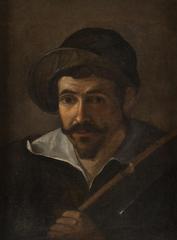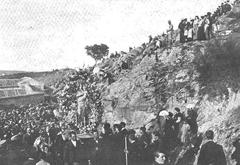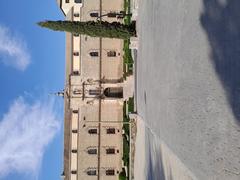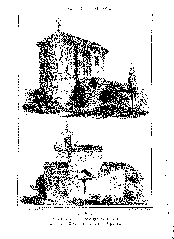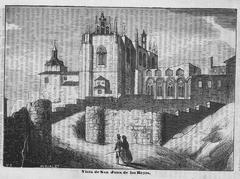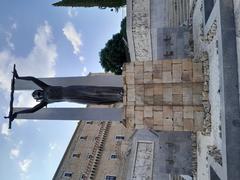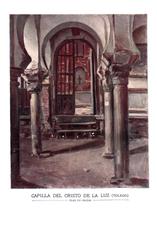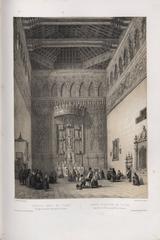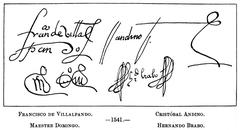Army Museum Toledo – Visiting Hours, Tickets, and Complete Historical Sites Guide
Date: 15/06/2025
Introduction
Perched atop Toledo’s highest point, the Alcázar fortress is a magnificent symbol of Spanish history and military heritage. Today, this iconic Renaissance building houses the Army Museum (Museo del Ejército), providing a deep dive into Spain’s military evolution across centuries. From Roman origins to its legendary role in the Spanish Civil War, the Alcázar and its museum offer visitors a rich, interactive experience. This comprehensive guide details visiting hours, ticketing, accessibility, must-see exhibits, and travel tips—making it your go-to resource for planning an unforgettable visit to one of Spain’s premier historical sites. For official updates, always consult the Army Museum website and additional resources (Spain.info, Toledo Spain Click).
Table of Contents
- Origins and History of the Alcázar of Toledo
- Renaissance Transformation and Royal Significance
- The Alcázar in the Spanish Civil War
- Establishment and Evolution of the Army Museum
- Architectural Highlights
- Museum Collections and Exhibition Highlights
- Visiting Hours, Tickets, and Accessibility
- Visitor Experience and Practical Tips
- Integration with Toledo’s Cultural Circuit
- Frequently Asked Questions (FAQ)
- Conclusion
- Sources and Further Reading
Origins and History of the Alcázar of Toledo
The Alcázar’s roots stretch back to the 3rd-century Roman Empire, serving as a strategic military and administrative hub (Museo del Ejército). Over centuries, successive rulers—including Visigothic kings and Islamic Taifa dynasties—fortified and adapted the structure, each leaving a distinct mark. Following the Christian reconquest by Alfonso VI in 1085, the fortress underwent major transformations to reflect the growing power of the Castilian monarchy (Spain.info).
Renaissance Transformation and Royal Significance
The 16th century ushered in a grand Renaissance redesign under Emperor Charles V, with architects like Alonso de Covarrubias and Juan de Herrera. The Alcázar became a quadrangular palace with four distinctive towers and a central courtyard—a blend of military might and royal splendor (Patrimonio Nacional). While its role as a royal residence was brief, its architectural innovations greatly influenced Spanish palace design.
The Alcázar in the Spanish Civil War
During the Spanish Civil War, the Alcázar became a national symbol. In 1936, besieged for 70 days by Republican forces, it was defended by Nationalist troops under Colonel Moscardó. The dramatic siege and subsequent relief turned the Alcázar into an emblem of sacrifice and resistance, heavily featured in Francoist propaganda. Postwar restoration preserved both Renaissance grandeur and visible scars of conflict (BBC History, Museo del Ejército).
Establishment and Evolution of the Army Museum
The Army Museum was first founded in Madrid in 1803, moving to the Alcázar in 2010 after extensive renovations (Museo del Ejército). This relocation united Spain’s military heritage with the fortress’s historic significance, resulting in over 80 exhibition rooms and galleries. Today, the collection exceeds 35,000 artifacts, spanning medieval arms, Napoleonic uniforms, and Civil War memorabilia.
Architectural Highlights
Exterior Features
The Alcázar’s commanding silhouette dominates Toledo’s skyline, anchored by four towers—each reflecting a different architectural style: Renaissance, Plateresque, medieval, and Churrigueresque (castlevisits.com). Massive stone walls and distinct façades illustrate the fortress’s defensive and ceremonial functions.
Interior Layout
Inside, the Alcázar combines historical remnants with modern exhibition spaces. Thirteen thematic rooms and eight chronological galleries allow visitors to trace Spanish military history while experiencing vaulted ceilings, stone corridors, and archaeological finds from Roman, Visigothic, and later eras (turismocastillalamancha.es, wikipedia.org).
Modern Museum Extension
A contemporary wing houses temporary exhibition halls, a library, restoration workshops, a cafeteria, and visitor amenities. The layout ensures smooth flow between the historic and modern sections (wikipedia.org, castlevisits.com).
Museum Collections and Exhibition Highlights
Weapons, Armor, and Military Art
The museum’s core collection features a vast array of weapons, armor, and artillery, from medieval swords and crossbows to modern firearms (whichmuseum.com). Themed galleries display uniforms, regimental banners, medals, and military decorations, illustrating centuries of Spanish military tradition.
Miniature Battle Replicas and Dioramas
Detailed models and dioramas reconstruct famous battles, providing visual context for historic campaigns.
Ethnographic and Historical Artifacts
Artifacts such as field equipment, engineering tools, and personal belongings of soldiers offer a glimpse into daily military life and the social impact of conflict (spain.info).
Library and Special Holdings
The Borbón Lorenzana library boasts over 380,000 volumes and rare manuscripts, strengthening the museum’s role as a research center (turismocastillalamancha.es).
Temporary Exhibits and Educational Programs
Rotating exhibitions and workshops focus on themes like women in the military and Spain’s overseas campaigns. Guided tours and educational resources are available in multiple languages (spain.info).
Visiting Hours, Tickets, and Accessibility
- Location: Cuesta de Carlos V, s/n, 45001 Toledo, Spain
- Visiting Hours: Open Tuesday to Sunday, 10:00–17:00 (last entry 16:30). Closed Mondays and select holidays (Museo del Ejército).
- Tickets: General admission €5; discounts for students, seniors, large families, and groups. Free entry on Sundays and select holidays (turismocastillalamancha.es).
- Accessibility: Elevators and ramps are provided, though some historic sections are less accessible. Staff assistance is available (Rick Steves Forum).
- Facilities: Cafeteria, museum shop, public library, accessible restrooms, and cloakroom.
- Guided Tours: Offered in Spanish and English; advance booking recommended in peak seasons (reddit.com).
- Photography: Allowed without flash; some exhibits may have restrictions.
- Getting There: Toledo is easily reached from Madrid by train (35 minutes), with local buses, taxis, or a scenic walk to the museum (reddit.com).
- Parking: Limited near the Alcázar; public transport or city parking is recommended.
- Interactive Map: Alcázar of Toledo Map
Visitor Experience and Practical Tips
- Plan Ahead: Reserve tickets online to avoid queues, especially in spring and summer.
- Duration: Allocate 2–3 hours for a comprehensive visit.
- Best Time: Early mornings or weekdays offer a quieter experience.
- For Families: Interactive exhibits and occasional workshops are suitable for children.
- For Seniors: Benches and accessible routes enhance comfort.
- Combine Visits: The museum is near the Toledo Cathedral, Jewish Quarter, and other major sites (whichmuseum.com).
- Toledo Tourist Bracelet: Consider the city’s tourist bracelet for discounted entry to multiple monuments (Toledo Spain Click).
- Language Support: Signage and audio guides in Spanish and English; printed guides available.
Integration with Toledo’s Cultural Circuit
The Army Museum forms a key part of Toledo’s “Tourist Bracelet” program, enabling visitors to explore several monuments with a single ticket. The Alcázar’s central location makes it an ideal starting point for discovering Toledo’s UNESCO-listed old town, the Cathedral, Jewish Quarter, and artisan sword workshops (Toledo Spain Click).
Frequently Asked Questions (FAQ)
Q: What are the current opening hours?
A: Tuesday to Sunday, 10:00–17:00; closed Mondays and selected holidays. Last entry 16:30.
Q: How much are tickets?
A: General admission €5; discounts and free entry available on certain days.
Q: Are guided tours available?
A: Yes, in Spanish and English, with advance booking recommended.
Q: Is the museum accessible?
A: Most modern areas are accessible; historic sections may pose challenges, but staff assistance is available.
Q: Can I take photos?
A: Yes, without flash; some exhibitions may restrict photography.
Q: How do I get there from Madrid?
A: High-speed train to Toledo, then local transport or walking to the Alcázar.
Conclusion
The Alcázar of Toledo and its Army Museum offer a profound and engaging exploration of Spain’s military, architectural, and cultural heritage. Their combined legacy—spanning Roman foundations, Renaissance grandeur, and Civil War symbolism—makes them unmissable for any visitor to Toledo. With extensive collections, interactive displays, and panoramic views, the museum provides a rewarding experience for history enthusiasts, families, and casual travelers alike.
For up-to-date information on visiting hours, ticketing, and events, refer to the official Army Museum website. Enhance your visit with the Audiala app for audio guides and offline maps, and connect with us on social media for the latest travel tips.
Start planning your journey today and discover the enduring spirit of Spain’s military past at the Alcázar of Toledo.
Sources and Further Reading
- Museo del Ejército – Alcázar de Toledo (Official Site)
- Alcázar of Toledo Information – Spain.info
- Toledo Monuments and Museums – Toledo Spain Click
- Army Museum of Toledo – turismocastillalamancha.es
- Alcázar of Toledo – castlevisits.com
- Museum of the Army (Toledo) – wikipedia.org
- Army Museum Toledo – whichmuseum.com
- Visitor Experience and Practical Information – thetouristchecklist.com
- Travel Forums – Rick Steves
- Reddit: Visiting Toledo
